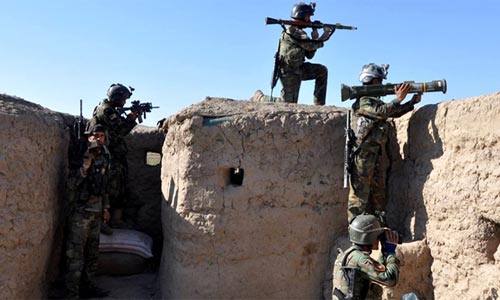With broadening the relationship of Taliban in the regional countries, they have increasingly used new divisive tactics and approaches which is more dangerous than war in the battlefield. They have also initiated using modern technologies and weapons which is fully new in Afghanistan. Attacking religious scholars, mosques, worshipers and certain ethnic groups are some of the new approaches and tactics which have carried out in recent months. According to local experts, targeting ethnic or religious groups are based on the sinister purpose of igniting religious divisions and sectarian war in the country. The recent clashes amongst students in the Kabul University increased the fear of hatred trends in the country.
Thus, they try to turn off the voice of real scholars who aware the people about a senseless war in the country. Assassinating the Head of Ulema Council for Kabul, Abdul Basir Haqqani, was one of the recent examples. Haqqani, who had outspoken stance against the insurgents, was killed by two gunmen on motorcycle in Police District 7 of the city. The event happened four days after a suicide bomber targeted a religious ceremony in Kabul, killing at least 55 people and wounding nearly a hundred. However, by targeting clerics, Quran reciters and religious ceremonies, terrorists have shown their own real face as they practically started fight against Islamic preachers and values.
Furthermore, Taliban are increasingly making efforts to occupy more territory in the eve of winter season. However, military plans have always been the same on this regard. In the past few years, the Taliban seized Kunduz Province before winter. Now the Taliban will add to their ability to take up some of the most important and strategic districts. The Taliban’s goal of this military effort is that the Afghan government will not be able to regain the captured districts by the coming of the cold and winter season. The reason is that the central government of Afghanistan always sends Kabul forces to recapture the areas under the occupation of Taliban while deployment of security forces is not possible in the cold winter season. Hence, the Taliban has planned to occupy some of the important districts alongside strategic provinces to maintain their military presence in important areas
The Afghan government must recognize that it is not only important to recapture the occupied area but also protect the endangered areas. Because the Taliban will pursue their vital goals by restarting their destructive attacks on the vulnerable areas after the central forces returned. This mistake has often repeated in the past but no lesson learnt yet. Some of the provinces and districts collapsed for several times but still there is fear of falls to the hand of Taliban. The consequence is brain drains, capital out and unprecedented unemployment in the country.
Therefore, the central government and local government are required to consider and implement different strategies. The strategy must be designed and regulated in a way that central government need not to be forced for deploying Kabul support forces to distant provinces and districts again and again. Firstly, sending forces from the central government to the districts will multiply the cost of transport and logistics of the Ministry of Defense. In addition, the repeated trips makes mood of the reserved forces always tired. On the other hand, this might be a part of Taliban’s war strategy to launch attacks on various districts of distant parts of Afghanistan to waste their energy and ability by towing them to those remote areas.
Of course, if it is invasive and the Afghan government is pushing the country’s security forces to launch an offensive against the Taliban, it will be a good and effective one, but if the case is the opposite and the Taliban will have an offensive position in distant districts, and the country’s defense forces will only be gradually tired and de-energized. Therefore, in the current situation, especially with the coming of the winter season, and the hardening of the force transfers from the center to distant areas such as the various districts of Ghazni and Uruzgan, and the regions like them, the government must use the local forces to maintain security of those areas after the return of the center.
In many parts of the country, the local defensive forces can be tasked locally in cold winter seasons provided that they are effectively directed and managed by the leadership of the central government and the official security agencies of the country and that their equipment is properly provided by the government. This method may help to save a large amount of governments expenditures wasted in frequent transportations and travels. The recent month’s evidence shows that the Taliban try to tow the government and security forces to multiply the defense expenses. The fact is that the Taliban has been disappointed from the capture and maintenance of the province but focused their efforts on occupying important districts
Lastly, the tactical consequence of Taliban attacks in the eve of bitterly cold winter is a large of number of people got displaced and homeless. According to UN reports, since the start of war in Hazarajat 70% of civilian population have been displaced to Ghazni, Kabul and Bamyan provinces. Thus, in other war-torn provinces such as Farah and some parts of Helman are suffering from the same issues while there is no enough assistance to cover their accusations, foods and other basic needs. Therefore, government must hold proactive strategy not allowing the rebel groups to target thousands of civilian populations.
Home » Opinion » The New Tactics of War in Afghanistan
The New Tactics of War in Afghanistan
| Mohammad Zahir Akbari

